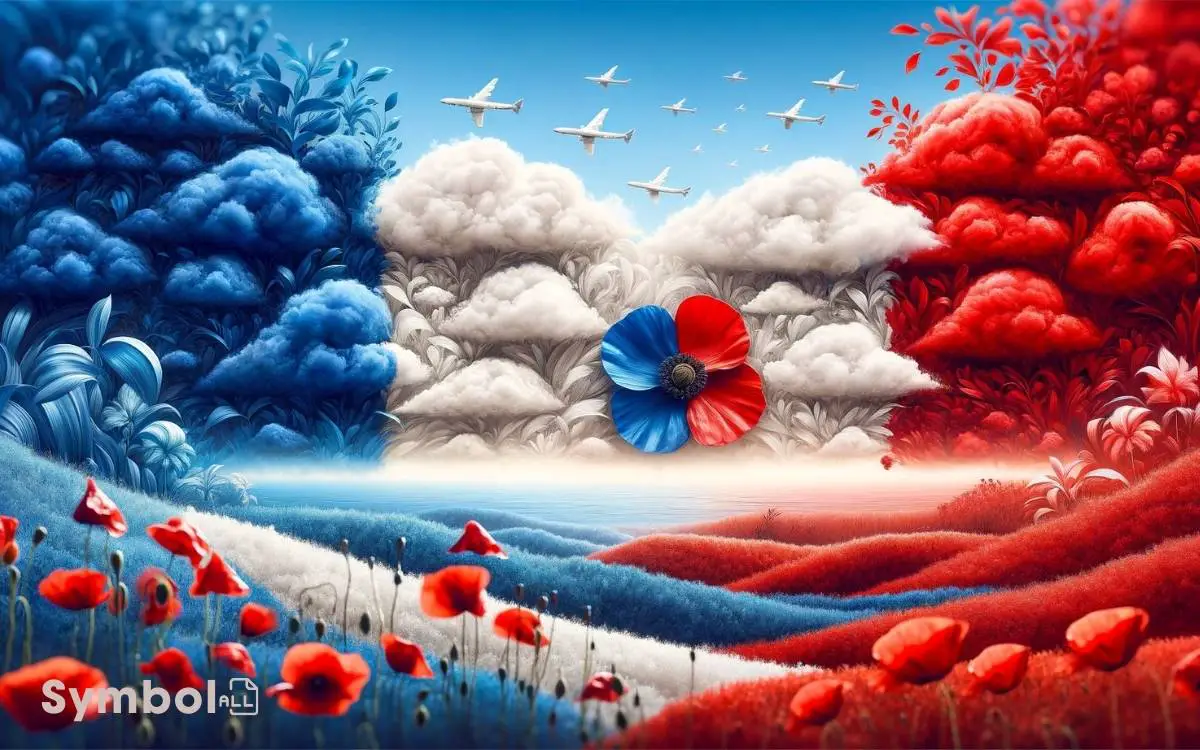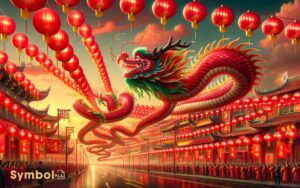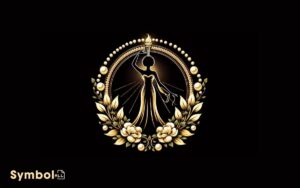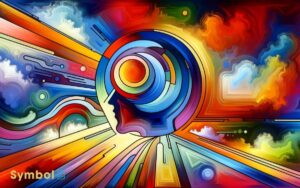What Do the Colors on the French Flag Symbolize? Explained!
The French flag’s colors, blue, white, and red, reveal the nation’s staunch ideals born from the French Revolution.
You’ll find that blue symbolizes liberty and the revolutionary spirit, a powerful reminder of France’s quest for freedom.
White, positioned at the flag’s heart, reflects the purity and the role of the monarchy in the nation’s history.
The red stripe commemorates the blood of martyrs, those who sacrificed their lives for sovereignty and justice.
Together, these hues embody the enduring principles of liberty, equality, and fraternity, shaping France’s identity.
Exploring further uncovers the flag’s profound symbolism, echoing the republic’s democratic ethos and global influence.

Key Takeaway
The Origins of Tricolor
The origins of the tricolor, emblematic of France’s national identity, trace back to the tumultuous period of the French Revolution in the late 18th century.
Initially, the colors represented different facets of the nation’s core values and the struggle for sovereignty. Over time, these hues have transcended their original interpretations, resonating with broader themes of unity and hope. However, in a world increasingly obsessed with symbolism and individual interpretation, some have paralleled these hues to whimsical concepts, even coining phrases like “la la land color meanings” to denote abstract or imaginative attributions. Such evolving perceptions highlight the dynamic relationship between cultural identity and visual storytelling.
You’ll find that the adoption of this flag wasn’t merely an aesthetic choice but a profound statement of the country’s newfound principles. Its inception is a confirmation to the collective desire for change, symbolizing unity among the revolutionaries.
The amalgamation of these colors into one flag was an innovative move, aiming to foster a sense of belonging and solidarity among the populace.
This decision marked a pivotal shift in the nation’s visual representation, deeply intertwining the flag’s hues with France’s quest for liberty, equality, and fraternity.
Blue: Liberty and Revolution
Within the tricolor, blue stands as a powerful symbol of liberty and the revolutionary zeal that fueled France’s quest for self-determination.
This hue isn’t merely ornamental; it embodies the profound aspirations and tumultuous spirit of the French Revolution.
Delving deeper, you’ll find that blue’s association with these ideals isn’t coincidental. Historically, it was the color worn by the Paris militia during the storming of the Bastille, a pivotal event in the Revolution.
This choice wasn’t arbitrary but a deliberate signal of the common people’s defiance against tyranny and their unwavering demand for freedom.
Consequently, blue’s presence on the flag isn’t just a matter of aesthetics; it’s a tribute to the enduring legacy of liberty that defines the nation’s identity.
White: Monarchy and Purity
Shifting to the color white in the French flag, we encounter a symbol deeply intertwined with notions of monarchy and purity.
Historically, white has been emblematic of the French monarchy, serving as a visual representation of royal power and divine right.
This association dates back to the Bourbon dynasty, where white was prominently featured in the royal coat of arms and flags.
Additionally, white’s symbolism extends beyond political power to embody purity and peace. Within the tricolor flag, white stands as a neutral ground, mediating between the vibrant blue and red, and suggesting a state of balance and harmony.
It’s a reminder of France’s tumultuous history, bridging the ideals of the past with aspirations for unity and peace in the nation’s future.
Red: The Blood of Martyrs
You’ll find that the red stripe of the French flag carries a profound historical significance, symbolizing the blood shed by martyrs during pivotal revolutionary periods.
This color’s symbolism extends beyond mere remembrance, encapsulating the spirit of liberty and sacrifice that fueled the revolution.
As we explore its modern interpretations, you’ll notice how the narrative surrounding red has evolved, yet it steadfastly honors its origins.
Historical Significance
The red stripe on the French flag symbolizes the blood of martyrs, reflecting a profound historical significance rooted in the sacrifices made during the French Revolution.
This emblematic hue transcends mere decoration, embodying the gravity of countless lives lost in pursuit of liberty, equality, and fraternity.
As you explore further, you’ll find that this color’s resonance extends beyond the Revolution’s tumultuous events. It serves as a perpetual reminder of the cost of freedom and the enduring spirit of a nation forged in the crucible of conflict.
The red stripe, therefore, isn’t just a component of a national flag; it encapsulates a narrative of resilience, sacrifice, and the unyielding pursuit of ideals that have shaped the French identity over centuries.
Symbolism in Revolution
Delving deeper into the symbolism of revolution, it’s important to understand that the red stripe embodies the profound sacrifices made by martyrs, whose blood was shed in the fervent quest for freedom during the French Revolution.
This color isn’t merely a hue; it represents a visceral reminder of the cost of liberty and the unyielding spirit of those who fought against tyranny and oppression.
The red in the tricolor flag transcends mere adornment, symbolizing the enduring fight for justice and equality. It’s a confirmation of the resilience and bravery of revolutionaries who, despite facing insurmountable odds, stood firm in their beliefs.
The red stripe serves not only as a historical marker but also as a perpetual inspiration for future generations to champion the cause of freedom and human rights.
Modern Interpretations
Reflecting on the historical significance of the red stripe, it’s imperative to explore how modern interpretations continue to honor the bloodshed by martyrs in the quest for liberty.
Today, the red component of France’s tricolor flag transcends its revolutionary roots to symbolize the enduring spirit of sacrifice and resilience that defines the nation. It’s a poignant reminder of the cost of freedom and the valor of those who’ve fought to preserve it.
This modern reading doesn’t merely look back in reverence; it actively inspires current and future generations to uphold the ideals of liberty, equality, and fraternity.
Through this lens, the red stripe serves as a continuous call to action, urging society to remember the sacrifices made and to commit to safeguarding the principles for which so many have given their lives.
Historical Transition of Colors
You’ll find that the French flag’s hues haven’t always been static, reflecting a rich tapestry of historical significance.
Starting with its early origins, which were steeped in medieval heraldry, the flag underwent critical transformations during the Revolution, marking a pivotal shift towards republicanism.
This evolution culminated in the modern adoption of its colors, symbolizing liberty, equality, and fraternity, principles that are deeply embedded in French national identity.
Early Flag Origins
The historical evolution of the French flag’s colors traces back to the Middle Ages, marking a complex shift influenced by political, social, and cultural changes. Initially, flags were mainly a single color representing the ruling dynasty or local lordship.
However, as France’s political landscape evolved, so did its symbols.
| Period | Color Significance |
|---|---|
| Middle Ages | Single colors tied to nobility and feudal lords |
| 12th Century | Introduction of heraldry, combining multiple colors |
| Pre-Revolution | Royal white flag symbolizing monarchy |
This transformation underscored the growing complexity of France’s identity.
Each phase in the flag’s color evolution not only mirrored the nation’s shifting allegiances and social hierarchy but also foreshadowed the impending revolutionary changes, setting the stage for a radical reimagining of France’s national symbols.
Revolution Era Changes
Amid the tumult of the Revolution, France’s flag colors underwent a profound transformation, embodying the nation’s quest for liberty, equality, and fraternity.
This period marked a symbolic departure from the past, steering the nation towards new ideals through its flag.
- Red and Blue: Originally representing the city of Paris, these colors were embraced by revolutionaries as symbols of the people’s strength and their demand for change.
- White: Once the color of the monarchy, it was reinterpreted to symbolize the nation’s pursuit of peace and unity amidst the upheaval.
- Arrangement: The tricolor configuration—blue, white, and red—reflected a break from monarchical rule, signifying the balance and equality of the new republic.
These alterations weren’t merely aesthetic but represented a fundamental shift in the political and social ethos of France.
Modern Symbolism Adoption
Entering into the modern era, France’s flag colors have developed to embody a broader spectrum of national values, reflecting the country’s historical journey and its contemporary identity.
The blue and red, once symbols of Paris and revolution, now also represent liberty and the people’s will.
White, the monarchy’s color, has surpassed its royal associations to signify peace and unity within the Republic.
This change signifies not just a shift in meaning but a fusion of France’s tumultuous past and its aspirations for democracy and fraternity.
The Flag and The French Revolution
Revolutionary fervor deeply intertwined with the emergence of the French flag during the French Revolution, symbolizing a nation’s quest for liberty, equality, and fraternity.
This era marked a significant transformation in the flag’s meaning and its representation of the French people’s aspirations.
- Liberty: The blue and red colors of Paris were combined with the royal white, representing the people’s desire for freedom from monarchical control.
- Equality: The flag’s uniform stripes symbolized the equal status of all citizens under the new republic, challenging the hierarchical society of the ancien régime.
- Fraternity: The tricolor became a unifying symbol, fostering a sense of brotherhood among the revolutionaries and the wider French population.
This evolution reflects the profound impact of revolutionary ideals on the national consciousness, embedding these values in the very fabric of the French flag.
Symbolism in Modern France
The tricolor flag of France has evolved to embody the enduring principles of liberty, equality, and fraternity, serving as a beacon of national identity and unity in contemporary France.
In the modern context, these colors transcend their revolutionary origins, symbolizing the French Republic’s commitment to uphold these ideals in a globalized world.
The flag’s presence at international forums, embassies, and global sporting events reinforces France’s role as a proponent of universal human rights and democratic values.
Moreover, within the nation, the flag fosters a sense of belonging among diverse communities, promoting social cohesion.
It acts as a reminder of the collective responsibility to champion the principles that constitute the foundation of the French Republic, ensuring their relevance and application in the evolving societal landscape.
Variations Across History
You must appreciate that the French flag’s design hasn’t been static, reflecting a rich tapestry of historical shifts.
From its early incarnations to revolutionary alterations and onto the subtleties of modern interpretations, each phase embodies distinct sociopolitical contexts and ideological undercurrents.
This evolution underscores the flag’s role as a living symbol, intricately tied to France’s national identity and the changing tides of its history.
Early Flag Designs
Throughout history, France’s national flag has undergone various transformations, reflecting shifts in political power, social values, and cultural identity.
These early designs provide a window into the evolving French identity:
- Oriflamme of Saint Denis: Before the national flag, France’s military used the Oriflamme, a banner of deep red, signifying bravery and strength in battle.
- Royal Standards: During the monarchy, the flag featured fleur-de-lis on a blue background. This emblem represented the divine right and sovereignty of French kings.
- White Cross on Blue: Reflecting medieval France, this design symbolized the country’s Christian faith and was often used during the Crusades.
Each variation serves as a reflection of France’s complex history, embodying the nation’s changing ideals, aspirations, and struggles through the ages.
Revolutionary Changes
In a period marked by upheaval, France’s flag underwent radical alterations, mirroring the nation’s revolutionary fervor and quest for liberty, equality, and fraternity.
The evolution of the flag is a proof of the dynamic shifts in political power and public sentiment during the revolution.
| Year | Description |
|---|---|
| 1789 | Introduction of the tricolor as a symbol of unity |
| 1790 | Adoption of the vertical stripes for better visibility |
| 1794 | Official adoption of the current blue, white, and red design |
| 1814 | Temporary return to the white flag of the monarchy |
This change reflects not just a shift in aesthetics but a profound alteration in the ideological underpinnings of French society.
Each iteration of the flag encapsulates a distinct phase in France’s journey towards establishing a republic grounded in the principles of freedom and equality.
Modern Interpretations
As we explore modern interpretations of the French flag, it’s evident that variations across history reflect nuanced shifts in national identity and values.
This evolution can be dissected into three distinct phases:
- Post-Revolutionary Emphasis: Following the turmoil of the French Revolution, the tricolor became a symbol of unity and resilience, embracing the republic’s ideals over monarchy.
- Colonial and Global Influence: During the colonial era and the two World Wars, the flag symbolized France’s global power and influence, embedding a sense of pride and patriotism.
- Contemporary Unity and Diversity: In recent times, the flag has come to represent a diverse and inclusive France, acknowledging its multicultural society while maintaining a connection to its revolutionary roots and republican values.
Each phase illustrates a deepening of societal values and a complex relationship with the nation’s identity.
Influence on Other Flags
The colors of the French flag have profoundly influenced the design of numerous national flags across the globe, reflecting a legacy of colonialism, revolution, and the spread of democratic ideals.
You’ll find the tricolor pattern, either directly adopted or serving as an inspiration, in the flags of countries that once fell under French colonial rule or were touched by the fervor of the French Revolution.
This widespread adoption underscores the French flag’s role as a symbol of liberty and egalitarian principles.
Additionally, the influence extends beyond mere color schemes; it’s deeply rooted in the narrative of nation-building and the struggle for autonomy.
The adoption of these colors by other nations signifies a complex history of influence, where ideals of freedom and democracy transcended borders, embedding themselves into the very fabric of national identities.
The Flag in French Culture
Beyond its global influence, France’s flag holds a central place in the nation’s cultural landscape, embodying a rich tapestry of history, values, and identity. The tricolor isn’t just an emblem; it’s woven into the very fabric of French life.
Here’s how:
- National Celebrations: The flag is prominently displayed during Bastille Day parades, symbolizing unity and pride. It becomes a focal point, encouraging reflection on France’s journey and its democratic ideals.
- Public Spaces: Government buildings, schools, and public squares often feature the flag, reinforcing its role as a symbol of the republic’s authority and the collective identity of its people.
- Cultural Representations: In art, literature, and cinema, the flag often appears as a motif, representing various facets of French identity, from resistance and revolution to peace and prosperity, reflecting the nation’s complex history and enduring spirit.
Global Recognition and Impact
France’s flag, known for its distinct tricolor, resonates far beyond its borders, embodying a symbol of universal values and global influence. Its colors have inspired numerous nations, representing freedom, equality, and brotherhood.
You’ll find its essence reflected in the flags and cultures around the globe, signifying its profound impact.
| Emotion | Global Impact |
|---|---|
| Pride | Many countries have adopted similar tricolor schemes, seeing France as a beacon of democratic ideals. |
| Unity | The French flag symbolizes the coming together of different peoples under common values, a sentiment echoed worldwide. |
| Hope | Its colors inspire movements aiming for liberty and justice, showing France’s enduring legacy in global human rights. |
Analyzing this, it’s evident that France’s flag transcends nationality, becoming a global icon of universal aspirations.
Conclusion
To sum up, the French tricolor flag, a symbol of liberty, monarchy, and sacrifice, weaves a rich tapestry of France’s turbulent history.
Like a lighthouse guiding ships through a stormy night, its colors illuminate the path of a nation’s quest for freedom, purity, and valor.
This emblem not only mirrors France’s soul but also casts a long shadow over global iconography, influencing countless other banners.
Its hues, steeped in blood, revolution, and royalty, continue to resonate deeply, symbolizing a legacy of resilience and unity.






